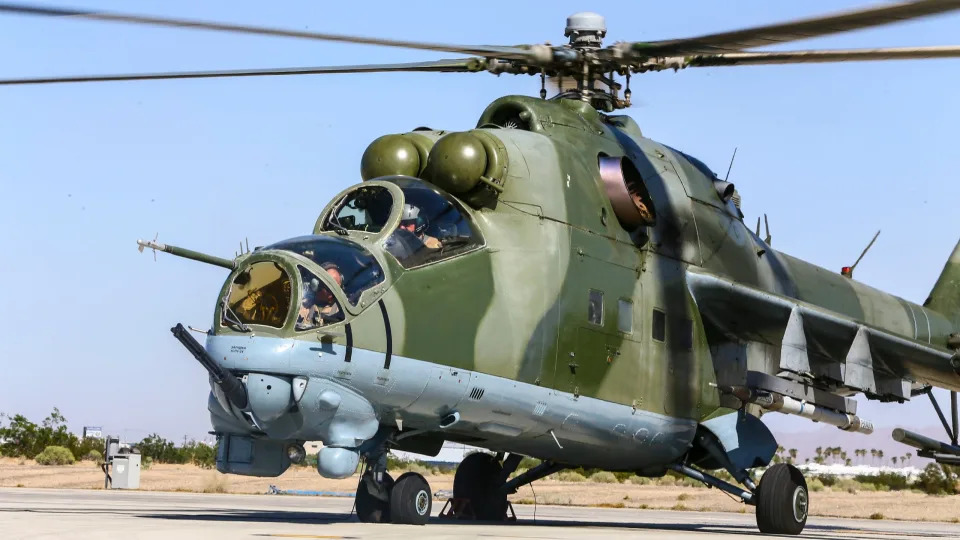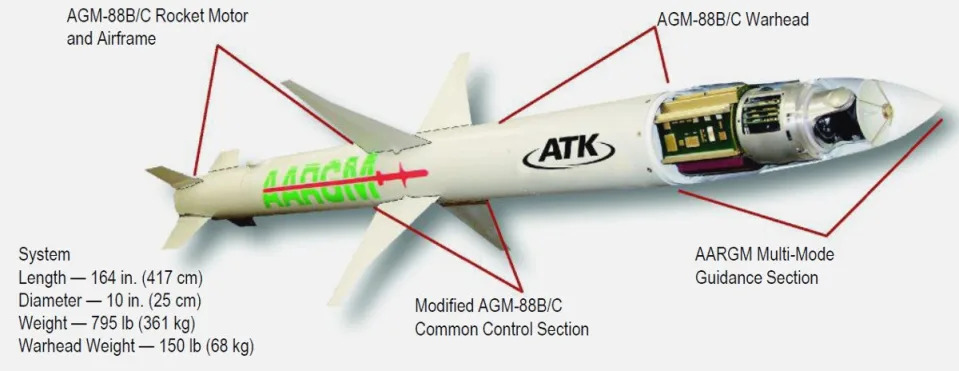Ukraine's exploding naval drones are hunting down Russian vessels like tugboats after the big Black Sea Fleet warships fell back
Thu, June 6, 2024
Ukrainian special forces on Thursday used naval drones to hunt down a Russian tugboat near Crimea.
Kyiv in recent weeks has been forced to go after smaller Russian vessels in the Black Sea.
Moscow has pulled back its larger warships to reduce their vulnerability to attacks.
Ukraine is using its arsenal of exploding naval drones to hunt down smaller Russian vessels instead of the larger Black Sea Fleet warships, which Moscow pulled back to reduce their vulnerability to attacks.
The Ukrainian Main Directorate of Intelligence stated that one of its special forces units staged a "successful attack" that destroyed a Russian military tugboat on Thursday. The operation against this Project 498-series vessel took place near the northwest corner of the occupied Crimean peninsula.
"Devastating fire damage was inflicted after the successful breakthrough of the line of defensive barriers of the occupiers in the Black Sea area," the HUR said in a statement shared to the Telegram messaging app, adding that the vessel "will no longer sail."
The operation appears to have been carried out by a Ukrainian surface drone, according to footage published by the HUR, although the exact model is unclear. Kyiv has relied on a fleet of homemade Magura V5 and Sea Baby drones packed with explosives to carry out devastating missions against ships of the Russian Black Sea Fleet throughout the war.
Footage of Thursday's operation, captured by a camera placed on one of the drones, appears to show a rather complex attack.
Multiple explosions can be seen around the coast, and the drone appears to slip through a hole in the floating boom defenses. The barrier may have been targeted in advance to allow the drone to pass through, though it's unclear. Russia has relied on these types of defenses — along with moored barges — to try to protect its ports from Ukraine's naval drones.
After navigating the harbor, the naval drone is seen eventually homing in on the tugboat. It then appears to slam into the Russian vessel, causing the video connection to terminate.
Business Insider could not immediately verify the footage.
Ukraine has, in recent weeks, been targeting smaller Russian military vessels in the northwestern Black Sea after Moscow moved its larger, more vulnerable warships away from the area and across the region following a string of devastating attacks.
Last month, for instance, Kyiv used its naval drones to conduct multiple operations against Russian patrol boats near Crimea.
The Black Sea fight has been a notable area of success for Ukraine. Lacking a proper navy of its own, Kyiv has relied on naval drones and long-range anti-ship missiles to wage an asymmetrical style of warfare against the Black Sea Fleet.
Russia has proven incapable of consistently protecting its warships against these threats. It has bolstered the defenses on its vessels and even sent combat aircraft to patrol the region. Earlier this year, Moscow also reshuffled its naval leadership, though the personnel changes have done little to save its fleet.
Howard Altman
Thu, June 6, 2024

A USN EA-18G took out an Mi-24 with an AARGM.
The Navy on Thursday confirmed to The War Zone that one of its EA-18G Growler electronic warfare aircraft used an AGM-88E Advanced Anti-Radiation Guided Missile (AARGM) to destroy a Mi-24/35 Hind attack helicopter. This confirms a possible explanation we suggested when a mysterious “kill mark” of a Hind appeared on a Growler deployed aboard the aircraft carrier Dwight D. Eisenhower (Ike) in a photo that was released on May 15. The engagement also likely highlights the AARGM's unique precision strike capabilities against non-radiating targets.
"The first instance of AARGM use in combat was from an E/A-18G deployed on Ike, during this current deployment to the U.S. 5th Fleet region," a Navy official told us. The official could not say if that engagement was the same as the one that earned a Growler its Hind kill mark.
We initially posited that the kill likely involved an AARGM.
“The Hind was reportedly struck on the ground, which is strange for a Growler,” The War Zone's Tyler Rogoway tweeted on May 16. “Best guess: they fired AARGM to hit coordinates, not home in on emissions, which it's capable of. It is a good time-sensitive target effector in this way. We'll find out more.”
That's pretty much what happened on Feb. 24, the Navy official told The War Zone.
“The Dwight D. Eisenhower (Ike) Carrier Strike Group led pre-planned self-defense strikes into Houthi-controlled territories in Yemen,” the official told us. “This was a joint and coalition effort that struck 60 Houthi targets across 16 sites in Yemen, including anti-ship missile sites, storage facilities and command and control centers. Also destroyed was a rotary-wing aircraft; the aircraft was unmanned and not airborne at the time.”

A privately owned Mi-24 used for as an opposition force (OPFOR) asset during training, in this case at the Marine Weapons Tactics Instructor (WTI) course. (U.S. Marine Corps photograph by SSgt. Artur Shvartsberg, MAWTS-1 COMCAM/ Released)
The Growler, from VAQ-130 “Zappers,” conducted "an air-to-surface engagement with an AGM-88E Advanced Anti-Radiation Guided Missile (AARGM) on a ground target that destroyed a rotary-wing aircraft,” the official added. “It is suspected that the helicopter belonged to Iranian-backed Houthi terrorists in Yemen, who have menaced civilian merchant shipping, taken innocent lives, and put feeedom of navigation at risk.”
CENTCOM posted a launch video from that operation, which you can see below.
The AARGM, which is a direct evolution of the AGM-88 High-Speed Anti-Radiation Missile (HARM), is designed primarily to suppress and destroy enemy air defenses. It can reach targets more than 80 miles away and reach speeds of well over twice the speed of sound. The AGM-88E was first test-fired from Growlers in 2011, according to the Navy, and has been in service for a number of years.
“AARGM has demonstrated a much greater accuracy than our existing HARM inventory in striking hostile emitters,” Cmdr. Chad Reed, then-deputy program manager for Anti-Radiation Missiles within the Direct and Time Sensitive Strike program office (PMA-242), said at the time. “The weapon is specifically designed to increase our warfighting capabilities in neutralizing enemy air defenses and will provide aircrews with an additional tool for the electronic attack mission.”

The basic configuration of the AGM-88E AARGM. Orbital ATK
The AARGM is different from its progenitor, the HARM, in a number of ways. Chief among them is that it can hit a threat radar with high-precision even if it stops emitting radiation. This means that if a radar shuts off mid-attack, the AARGM will still strike it and do so with extreme accuracy. The addition of an active millimeter-wave radar seeker even allows the AARGM to hit its target if it is fleeing from its original position.
This standoff precision strike capability also allows the AARGM to be used in a secondary capacity as a rapid response strike weapon against non-air defense-related targets. In other words, it can be used to quickly strike a non-radiation emitting target on the ground over long distances. In this case, something in the Navy's 'kill chain' or pre-mission intelligence spotted the Mi-24 and the AARGM was used to destroy it as it sat on the ground, using GPS/INS to make its way to the target, then homing in on it using its millimeter-wave radar seeker. Otherwise, it was destroyed via collateral damage caused by another target that was hit nearby, although that seems less likely of an explanation.
https://www.youtube.com/watch?v=FCBs1IEk9Fc\u0026t=1s
The Growler kill mark was the latest in a long tradition of such art being stenciled onto aircraft, vessels and other military equipment indicating the destruction of enemy equipment. In March, for instance, we wrote about the U.S. Navy's F/A-18E/F Super Hornets deployed aboard the Ike were adorned to commemorate the downing of Houthi drones. They have also appeared on allied aircraft involved in these missions. That followed kill marks seen on warships that swatted down similar threats in the region.
This kill, as we previously noted, also comes as the Growlers are getting expanded air-to-air missile capabilities via additional AIM-120 AMRAAM carriage options, with the AIM-9X being added soon, as well. Considering the activity of Houthi drones over and around the Red Sea, it's possible that a Growler could score its first air-to-air kill at any time, if one hasn't already.
The Yemeni Air Force had a number of Mi-24/35 Hind derivatives before the war with the Saudi-led Arab coalition broke out against Houthi rebels in the western part of the country. It was originally thought that any in their possession were destroyed or left totally unserviceable during the conflict, while other reports suggested a small number of them saw action in recent years.
Regardless of the disposition of the fleet, there is now one less Hind in Houthi hands.
Contact the author: howard@thewarzone.com
No comments:
Post a Comment